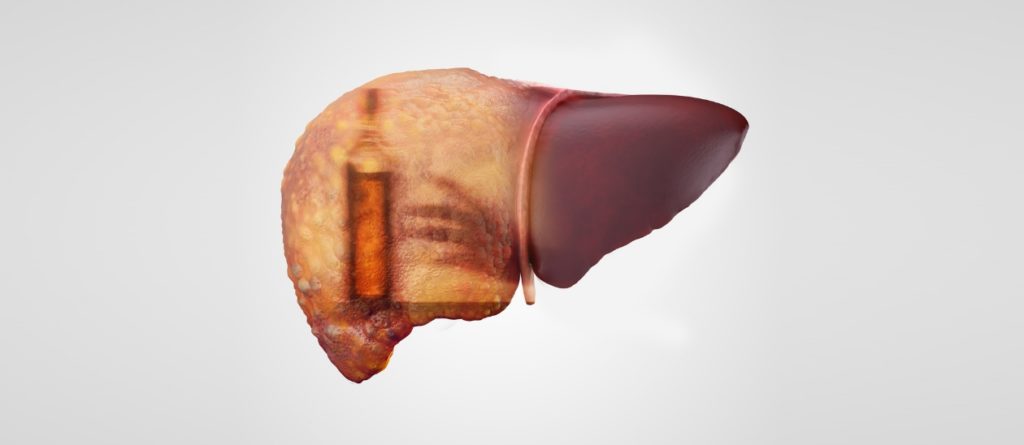What is the problem and how much of a problem is it?
As the World Health Organization warns, ‘of all the major health threats to emerge, none has challenged the very foundations of public health so profoundly as the rise of chronic noncommunicable diseases.’1
More than 7 out of 10 deaths around the world (about 41 million each year), and about 9 out of 10 deaths in Australia, are due to non-communicable diseases (NCDs) – the name given to the group of diseases that result from a combination of genetic, lifestyle, behavioural and environmental factors.2,3
The main types of NCDs include cardiovascular disease (e.g. heart attacks, strokes), cancers, chronic lung disease (e.g. chronic obstructive pulmonary disease, asthma) and diabetes. While each of these disease groups are distinct, they share key commonalities in terms of prevention, causes and management.2
NCDs don’t just kill: they destroy lives – the lives of patients, their families and communities. NCDs pose a significant threat to global sustainable development. For example, NCDs and poverty are inextricably linked.2 In some populations, 60% of people with NCDs suffer catastrophic health expenditure4 – when people have to pay health care fees beyond their means, resulting in ‘financial catastrophe’.5 NCDs are also a question of inequality, as socially disadvantaged and vulnerable people – including people living with disabilities, women, children and the elderly – are disproportionately affected.2
Mental health conditions constitute another major group of NCDs.6 With more than 300 million sufferers, depression is the leading cause of disability worldwide. At its worst, depression can lead to suicide, which is responsible for nearly 800 000 deaths each year.7
Common mental health disorders, such as depression and anxiety, share many of the same determinants and consequences as other NCD groups, and they frequently co-exist. For instance, people with depression or anxiety have a greater risk of developing diabetes and heart disease; similarly, people with heart disease have a three times greater prevalence of depression.8 Therefore, any discussion about NCDs is incomplete without mental health.
Get on top of your general health
Find and instantly book affordable GPs within Australia
How did it come to this?
To understand why global rates of NCDs are increasing at such an alarming rate, we need to explore the common, preventable risk factors that are driving NCDs around the world: cigarette smoking, unhealthy diets and poor nutrition, lack of physical activity, air pollution and harmful alcohol use.9 For most of these risk factors, it is impossible to ignore the impact of questionable business interests that are detrimental to human health, and the underlying economic system that permits it.10
Cigarette smoking
8 million people die every year from tobacco use, with most deaths occurring in areas that are targets of intensive tobacco industry influence: low- and middle-income countries. It is also estimated that second-hand smoke causes an additional 1.2 million deaths every year, meaning that tobacco is one of the biggest killers for non-smokers as well. This scale of human loss is, of course, shocking, particularly considering it’s completely preventable.11
Image. Smoking a cigarette12
The cost of tobacco from an economic perspective is about US$1.4 trillion each year.11 This is roughly equivalent to the expected 2019 gross domestic product of Australia, the world’s 14th largest economy.13
Unhealthy diets and poor nutrition
According to a recent Global Nutrition Report, ‘Few challenges facing the global community today match the scale of malnutrition [which encompasses obesity], a condition that directly affects one in three people.’14
Unhealthy diets have now become the biggest burden of disease in the world.14 Due to the sheer scale of the problem and its complex interconnections with food systems, the environment and climate change, and society and culture in general, this topic is discussed in detail elsewhere in this series.
Image. Burger as part of an unhealthy diet15
Lack of physical activity
Approximately 3.2 million deaths every year are due to insufficient physical activity. This is largely attributed to people exercising less during their leisure time, and an increase in sedentary behaviour at work, at home and when travelling between work and home. For instance, the increase of ‘passive’ transport – i.e. cars – has been linked with declining levels of physical activity.16
From a development perspective, increased urbanisation has been labelled as a key driver of physical inactivity. People in densely populated environments are more likely to feel discouraged from exercising. This is due to higher rates of violence, traffic and pollution, as well as having reduced access to facilities and infrastructure that promotes activity (e.g. parks, sidewalks, sports facilities).16
Image. Traffic jam17

Air pollution
Every day, 9 out of 10 people around the world breathe in polluted air. Air pollution is now considered one of the greatest risks to health, leading to the premature deaths of around 7 million people every year.9
Harmful alcohol use
Globally, harmful alcohol use results in 3 million deaths annually and is the leading risk factor for premature death and disability among people aged between 15 and 49. Of course, alcohol is a normal, and even integral, part of the social and cultural landscape in many populations.18 Therefore, the question of concern is not alcohol consumption in and of itself. Similar to large tobacco corporations, the issue is the questionable nature of profit-seeking by large private corporations through strategies that clearly lead to harmful alcohol consumption. Part of the issue is also political strategies that prevent governments and public health bodies from protecting the public from these harmful practices.19
Image. Shelf of alcoholic drinks20
What can we do about it?
At the individual level, we can aim to prevent the chances of developing NCDs by endeavouring to live a healthy lifestyle. Put simply, this means to avoid smoking, eat well, remain active, limit alcohol consumption and be mindful of air pollution (although this factor is often out of our hands).
If you would like professional advice on how to lead a healthier lifestyle, why not visit your local GP.
Of course, it’s easy to advise individuals to be healthier, but often difficult to follow through when our environment is becoming more and more conducive to being unhealthy. If we work long hours, how can we find the time to exercise and prepare healthy meals? Why should we spend more money on fresh produce when ready-made meals are so much cheaper and easier? Is the available support to quit smoking really sufficient?
At the population level, the onus is on our governments – federal, state and local – to ensure that they are doing everything possible to provide us with safe and healthy environments. It is well accepted that preventing NCDs, including mental health disorders, sustainably and systematically, requires the implementation of wide-reaching policies. These can encompass action from a wide range of sectors, including health, agriculture, trade, finance, education and transport. In reality, such policies at times lead to conflict, with health and economic sectors often in opposition.
Take for example the suggestion of a sugar tax on soft drinks. Soft drink manufacturers and their trade associations are strongly opposed to such a measure, often citing that it would lead to a loss of jobs.21 Public health advocates, on the other hand, point to evidence which highlights that the sugar tax has been shown to improve dietary and health-related behaviour.22 Ultimately, implementing policies favourable to population health, necessitates political will from our leaders to ensure public interests remain centre stage.
References
- World Health Organization (online). Noncommunicable diseases: the slow motion disaster [accessed 16 August 2019]. Available from: URL link
- World Health Organization (online). Noncommunicable diseases: Key facts [accessed 15 August 2019]. Available from: URL link
- The Medical Journal of Australia (online). Australia’s health: being accountable for prevention [accessed 16 August 2019]. Available from: URL link
- The George Institute for Global Health (online). Addressing the economic burden of non-communicable diseases [accessed 16 August 2019]. Available from: URL link
- World Health Organization (online). Designing Health Financing Systems to Reduce Catastrophic Health Expenditure [accessed 16 August 2019]. Available from: URL link
- Mental Health Innovation Network (online). Linking Mental Health & NCD Priorities [accessed 16 August 2019]. Available from: URL link
- World Health Organization (online). Depression: Key facts [accessed 16 August 2019]. Available from: URL link
- World Health Organization (online). Synergies for beating NCDs and promoting mental health and well-being [accessed 16 August 2019]. Available from: URL link
- World Health Organization (online). Ten threats to global health [accessed 16 August 2019]. Available from: URL link
- Stiglitz, Joseph. The Guardian: Neoliberalism must be pronounced dead and buried. Where next? [accessed 16 August]. Available from: URL link
- World Health Organization (online). Tobacco [accessed 16 August 2019]. Available from: URL link
- Pixabay (online). Image: Untitled [accessed 20 August 2019]. Available from: URL link
- Trading economics (online). Australia GDP [accessed 16 August 2019]. Available from: URL link
- Global Nutrition Report 2016. From Promise to Impact: Ending Malnutrition by 2030 [accessed 16 August 2019]. Available from: URL link
- Wikimedia Commons (online). Image: Evan’s picture of a big mac [accessed 20 August 2019]. Available from: URL link
- World Health Organization (online). Physical Inactivity: A Global Public Health Problem [accessed 16 August 2019]. Available from: URL link
- Wikimedia Commons (online). Image: Bangkok traffic by g-hat [accessed 20 August 2019]. Available from: URL link
- World Health Organization (online). Alcohol [accessed 16 August 2019]. Available from: URL link
- The Lancet (online). Profits and pandemics: prevention of harmful effects of tobacco, alcohol, and ultra-processed food and drink industries [accessed 16 August 2019]. Available from: URL link
- Maxpixel (online). Image: Glass Drink Bar Beverages Bottles Alcohol [accessed 20 August 2019]. Available from: URL link
- Fooddrinktax.eu (online). UK Sugar Tax expected to cause significant job losses [accessed 20 August 2019]. Available from: URL link
- WHO Europe (online). Using price policies to promote healthier diets [accessed 20 August 2019]. Available from: URL link
All content and media on the HealthEngine Blog is created and published online for informational purposes only. It is not intended to be a substitute for professional medical advice and should not be relied on as health or personal advice. Always seek the guidance of your doctor or other qualified health professional with any questions you may have regarding your health or a medical condition. Never disregard the advice of a medical professional, or delay in seeking it because of something you have read on this Website. If you think you may have a medical emergency, call your doctor, go to the nearest hospital emergency department, or call the emergency services immediately.











